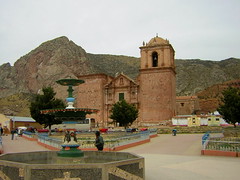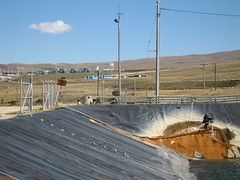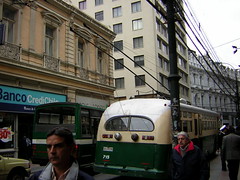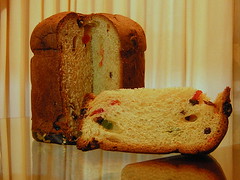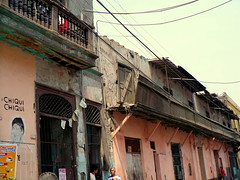Expat writer Barbara Drake describes how she got pulled into doing the “Whipping Dance” at 15,000 feet above sea level.
Category: "Travel and Places"
Hatunrumiyoc and the Twelve Angle Stone
The origins of the magnificent ruins of a building that we call Hatunrumiyoc are lost in time. Built with huge polygonal stones, cut and fitted with exceptional precision, it is one of the most impressive structures of ancient Cusco. Its imposing walls hide a number of surprises, from the famous 12-Angle Stone, to shapes of local animals built into the structure itself.
Kusikancha – Inca Cusco revealed
Much of the ancient layout of Cusco has been lost beneath its more recent colonial buildings. Just a few of the narrow streets with central drainage channels remain and almost nothing can be seen of the city layout known as the “chanchas”. That was, until now.
The changing face of Cusco’s plaza
From sacred imperial capital of the Incas to commercial centre home to American chains like McDonald’s and Starbucks, the face of Cusco is changing with the times.
Pre-Inca tomb found at Salapunku, Machu Picchu reserve
Archaeologists from the National Institute of Culture (INC) have found a pre-Inca tomb at the Salapunku archaeological site located in the protected area of Machu Picchu.
The Salapunku site, located above the railway line than today takes visitors to the ruins of Machu Picchu, is home to a bridges, an aqueducts and now pre-Inca tombs.
The discovery was made in the area known as Zone III and the tombs were located in a sheltered part of a rock face. The burial is thought to be of the Quillke culture that lived here before the Incas, as Quillke pottery was found alongside the bones, as well as fragments of obsidian.
Cementerio Barquíjano
Walking along Av. Oscar R. Benavides, once called the Avenida Colonial that joined Callao with distant Lima, I happened upon this very pretty cemetery. It was Sunday and the large entrance was busy with families visiting lost relatives and flower sellers doing a brisk trade.
This public cemetery, built in 1859 is the final resting place of Chalacos (as the people from Callao are called) both rich and poor. The rich have built grand mausoleums while the poor suffice with a nook in a wall of tombs. Interestingly for such an old cemetery it is still in use, and it is a strange contrast to see much more modern mausoleums and graves alongside much older ones, or see old family plots more recently added to. It is also obvious, through the placing of fresh flowers and candles, whom among the dead are still remembered and mourned, and who have been forgotten.
Huarique Mateo
There isn’t a chalaco (as the natives of Callao are called) who has not eaten at Mateo, located in the historic center of Callao.
In Mateo, the specialities are first-rate fish and seafood.
Donald Duck visits Lake Titicaca
Charlton Heston had already visited Machu Picchu in Secret of the Incas, so not to be outdone, another of Hollywood’s greats, one Mr Donald Duck, decided to visit the lake that is famously the highest navigable lake in the world.
Islas Palomino: Boat trip in Callao
Just off the coast of Callao, or more precisely, about 4km from the tip of La Punta, are two rocky uninhabited islands, which together with a few other rocky outcrops are called the Islas Palomino. The two major islands, one large and one small, are called San Lorenzo and El Frontón. Each have their own stories to tell.
Chucuito, Callao
Where old Callao ends and La Punta begins is Chucuito, a little barrio on the rocky beaches to the side of Peru’s, main port. Originally settled by Italian immigrants as recently as the late 1800s, it soon merged seamlessly into its increasing urban surroundings.
La Punta del Callao
Jutting out into the Pacific from the old port city of Callao is La Punta. Despite being attached to the noisy and bustling metropolis that is Lima and Callao, La Punta remains tranquil and pleasant, not unlike a small town in itself. Deeply connected to the sea and sea-faring, this is where private owners of yachts tie-up, where boating clubs reside and where the Peruvian Navy has its naval school. Home to Callao’s middle-class, its streets are attractive and tidy, lined with the mansions of the countries Republican period.
Colonial Callao
Starting life as a rocky bay that was the nearest natural port to Pizarro’s capital of Los Reyes, El Callao soon became the most important port in the Spanish colonies. It has witnessed colonial splendour, pirate attacks, disastrous tsunamis, battles, republican splendour and economic collapse. Each of these events have left a mark on the city and the chalacos that live there, many of these marks visible to this day.



